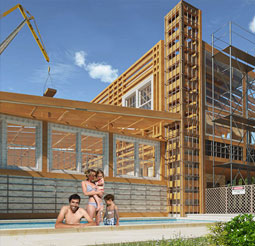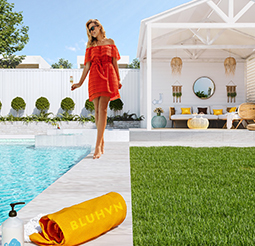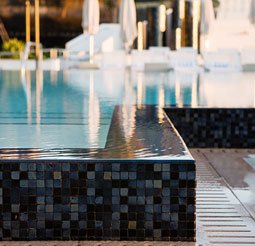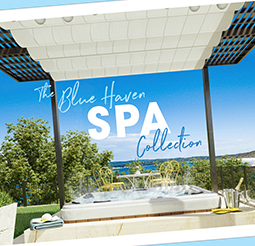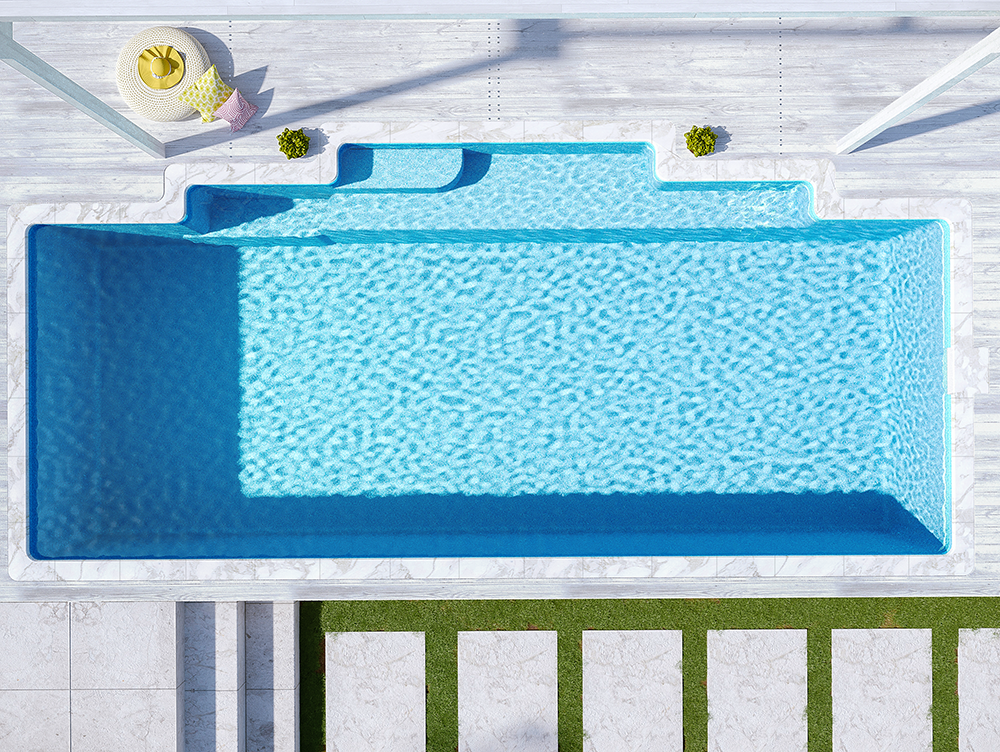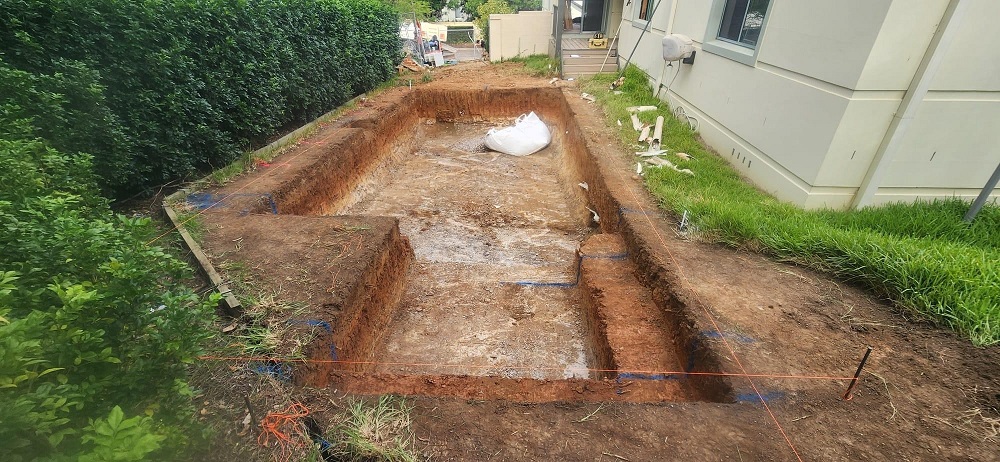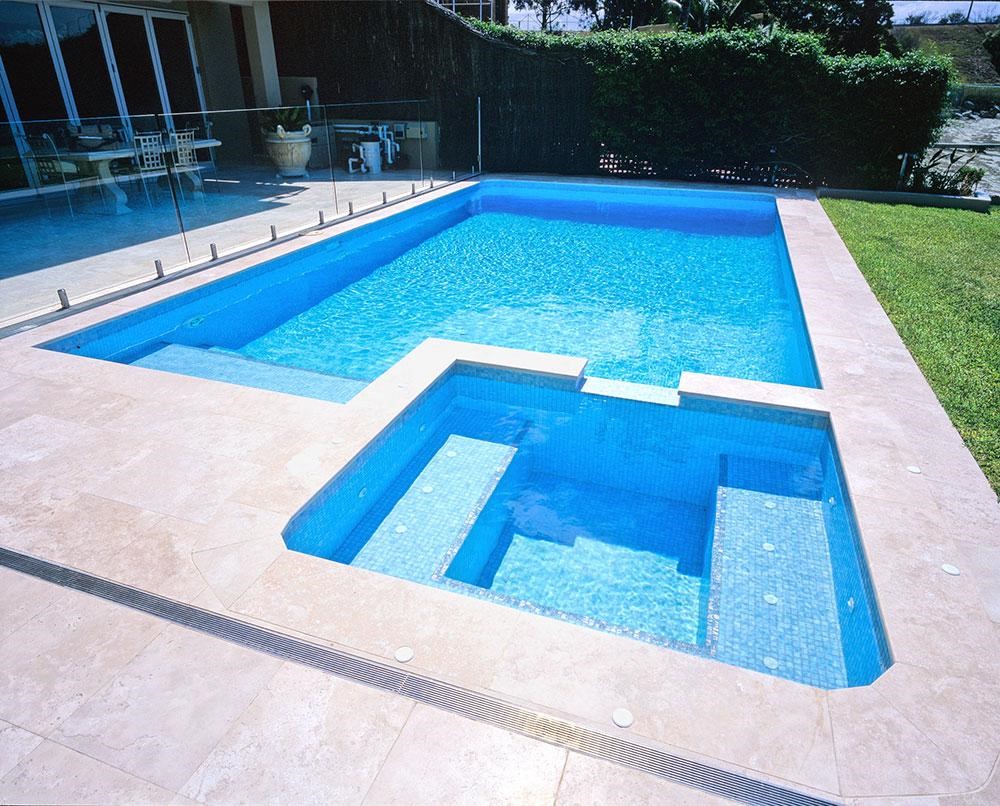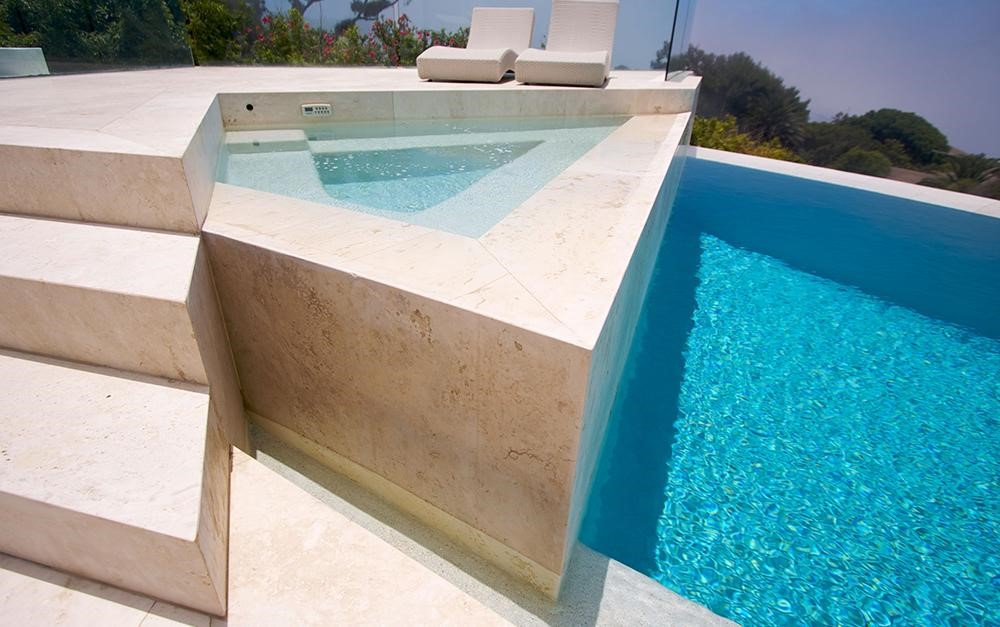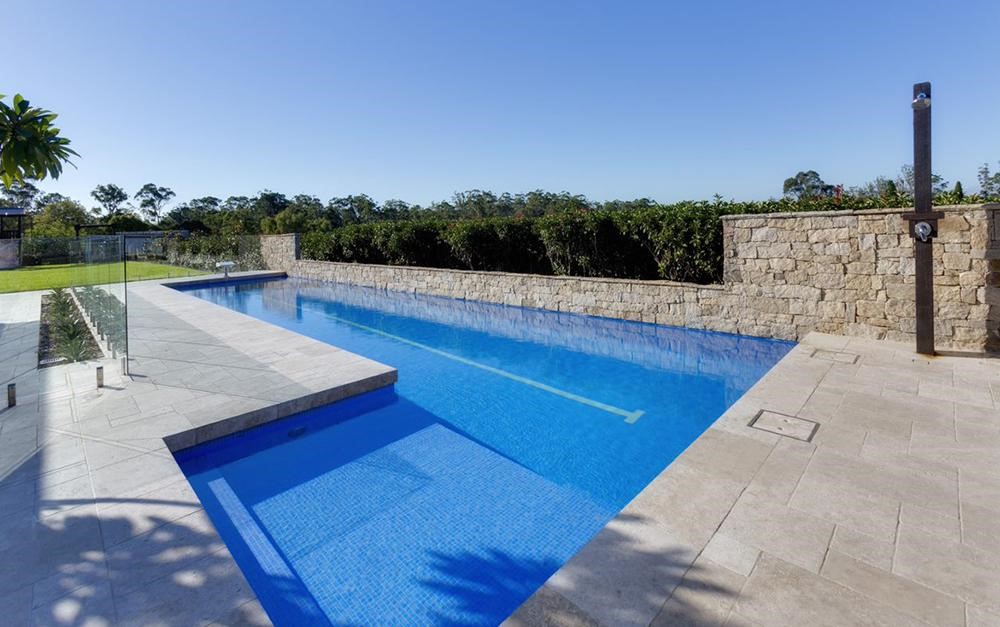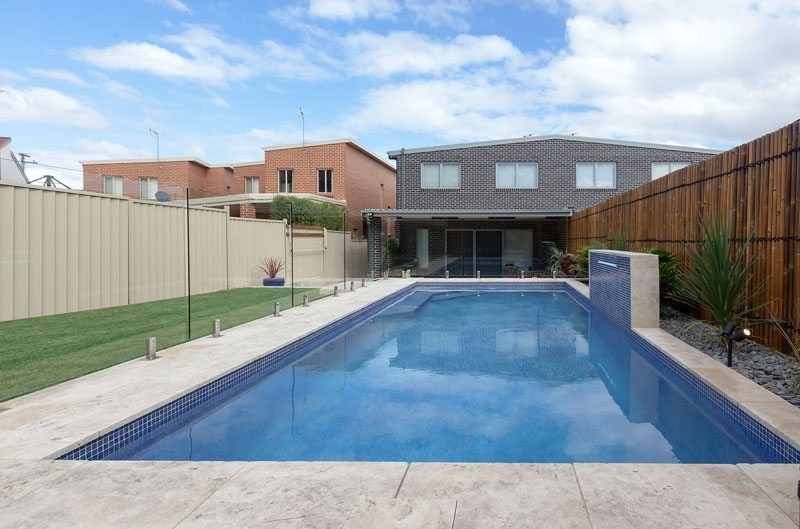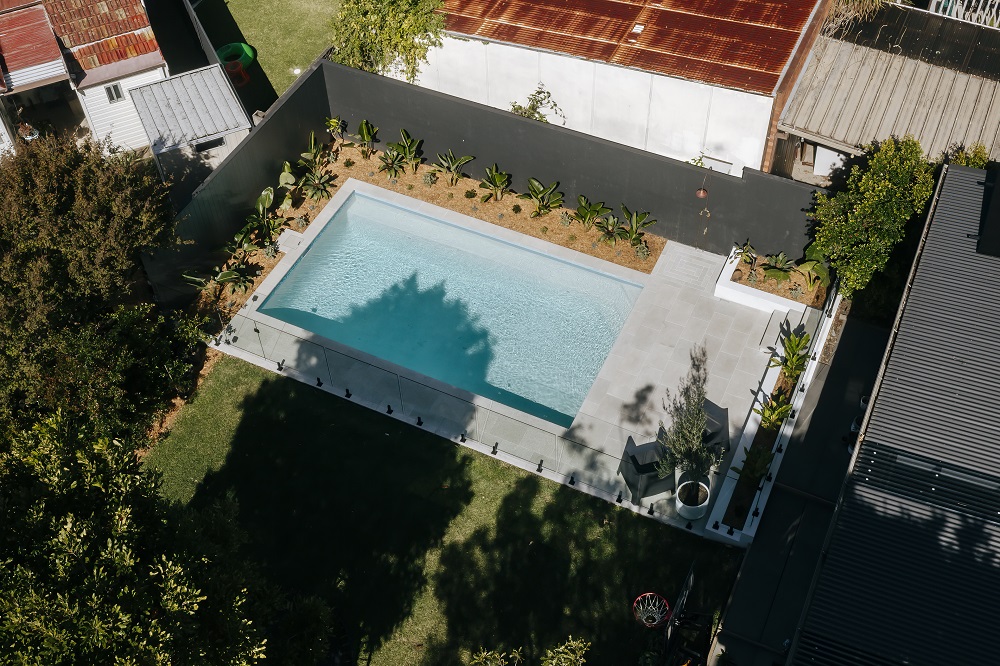Concrete Pools vs Fibreglass Pools
March 28, 2018
In the first part of this blog series, we have already learned about the advantages that come with installing an in-ground concrete pool due to its longevity and on-site installation process. In the second and last part of this series, we will focus on the design opportunities of both materials, tactility and of course the value you’ll get for your money.
While fibreglass pools come manufactured off the factory shelf, their sizes and shapes offer little opportunity to blend into an existing landscape. Locally handmade concrete pools will follow any slope and steeps of your property to match any shape you have dreamed of by moulding themselves perfectly into your backyard design. They will make the most of the available space and their aesthetics blend in with the surrounding nature with their range of vertical waterline tile finishes compared to the tile band of a fibreglass pool which will sit proudly on top of the shell and always stand out.
There is the assumption that a fibreglass pool is more smooth and nicer to the touch than a concrete one. But a rough concrete surface only exists when the coat is not properly finished, and the pool is still lacking texture such as tiles. On the contrary, a fibreglass shell can get quite slippery hence supervising even older children when playing in the pool is an absolute must.
The water in a fibreglass pool will cool down faster overnight due to the thin material of the shell which does not absorb heat. Also, the earth around it cools down quickly which might make a dip in the pool less attractive in the early morning. Concrete is a naturally warmer material than fibreglass, and the water will store the summer heat for quite a while. The thickness of a concrete pool wall has mass and therefore insulation benefits.
Even though plastic pools and concrete ones usually come with the same price tag, most commonly a fibreglass pool is more expensive because of its installation process. The use of a crane and stopping traffic in a busy urban area can be quite costly, and the ground the shell needs to be set up upon may demand quite a bit of landscaping for the excavated hole. Fibreglass pools are usually marketed and measured from the outside whereas concrete pools are sold by the internal swimming area size without the outside material taken into the account thus you’ll get more value for your money.
To recap this blogs debate, it suffices to say that concrete pools are made to last. They are easy to install and maintain, and their designs and features can be customised on the spot to complement any family backyard!
Discover Also:

